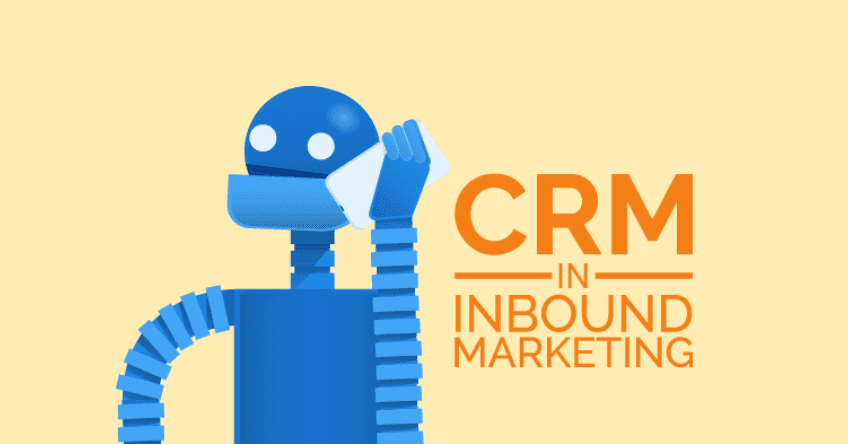Over the last few years, we have seen a modernization in all market segments.
Technologies being developed to solve problems that did not exist before, but that are determinant for the survival of any business.
In the sales area, for example, long and confused sheets were replaced by advanced CRM systems.
For committed companies, today it is impossible to imagine an efficient sales process without mature customer relationship management.
Another sector that has evolved enough to adapt to the technological advance is the marketing.
Before it was common to produce ads and wait for customers to appear, today the process is not so simple. To attract quality leads you need to delight the customer, create an engaging narrative, and deliver quality content.
Modern challenges are not just about adaptation, but rather integration between each of the stages. If the marketing argument is not compatible with the business approach, any investment on both sides can be lost.
When a customer enthralled by marketing finds an inefficient sales process, frustration can cost all the trust that has already been established.
On the other hand, without an efficient marketing, new customers hardly reach the sales funnel.
But how to make an efficient integration between these two important arms of the company?
Why Inbound Marketing Strategy?
With the popularization of the internet, social media and the ease of reaching people, companies started a fierce dispute for the attention of potential clients.
But if all companies are able to reach everyone, how can you stand out? How is it possible to stick the noise and close communication with a potential customer?
The answer to these questions is given by Inbound Marketing.
Rather than causing discomfort to the interruption, Inbound attracts customers through quality content, gaining their volunteer focus while educating and directing sales.
The result is the capture of more customers, with more quality and greater conversion potential.
We can summarize the process as follows:
- Attract the customer with quality content (blog posts, podcasts, ebooks);
- Convert the leads through the content produced, ensuring that the customer already understands the concept of the product;
- Carry out the closing of the sale, the most expected part of the flow;
- And instead of leaving the customer after the conclusion of the sale, the important process of enchantment begins, maintaining the quality of the content generated and helping the customer achieve the desired success with the product.
Understanding the role of CRM
The introduction of a technology for relationship management should influence the entire culture of the company. It is not only new business management software, adopting a CRM means that the whole focus of the business will be directed at the customer.
A CRM is effective when the company can understand exactly who the customer is, what their real needs are, how best to serve them and deliver the desired value.
All of this ability to centralize and cross-reference customer data is crucial to the role of Inbound Marketing.
This information is very important to enrich the personas and make the even more efficient marketing strategy. Instead of looking for any customer, Inbound believes it’s important to focus on the right audience, optimizing resources, and increasing effectiveness.
When we integrate the CRM to Inbound Marketing strategy, the lead that comes to the system is considered as a Qualified Lead Marketing.
It is not just a potential customer, but someone educated, who understands the business proposition and has their expectations aligned. Ideally, the marketing team itself is responsible for inserting the leads into the system, ensuring that no detail is left out.
As part of this strategy, it is essential that the sales team is aware of when the lead entered the marketing flow, which contents were part of this journey and exactly which point the lead conversion happened.
All these details will help in a first contact, greatly increasing the chances of converting the lead into a customer.
But the work of the marketing team does not end when a customer reaches the sales flow, any new information added to the CRM will influence the construction of a more precise speech that will be used in the Inbound strategy in the future.
If what happens in CRM is important for building the content used by marketing, the reverse path is equally valuable.
It is necessary that the sales team be supplied with the materials provided by the marketing, familiarizing themselves with the discourse used and giving continuity to the communication built by the inbound.
What to expect from this integration?
Customers are able to sense the lack of synchronicity between two areas. When the argument that conquered the client is not fulfilled at the time of contact, this shock turns into frustration.
The various areas of a business tend to see themselves as separate parts and, when they act out of sync, the result is a series of mistakes that end up damaging the company’s credibility, often costing even the client’s conversion.
Areas such as Sales, Marketing, and Customer Success should remain integrated and sharing information, ensuring that the initial communication is directed to the customer profile and that communication is maintained at all stages of the process.
Not only that, with so much accurate customer data and sales stages, we have been able to conduct richer analytics.
You can know exactly the number of leads that were generated, which ones evolved into the sales funnel, the causes that caused the losses, which are the most effective materials, and various other vital information to improve and realign the business strategy.
Is there any question? Do you think I have missed something? Share with us and help further enrich this content!















